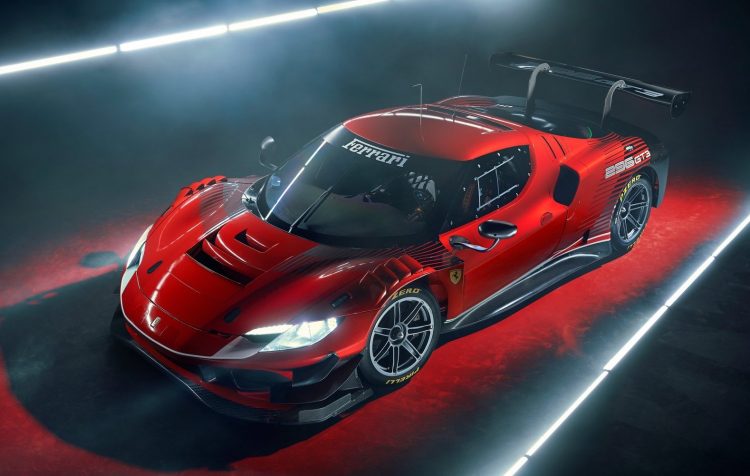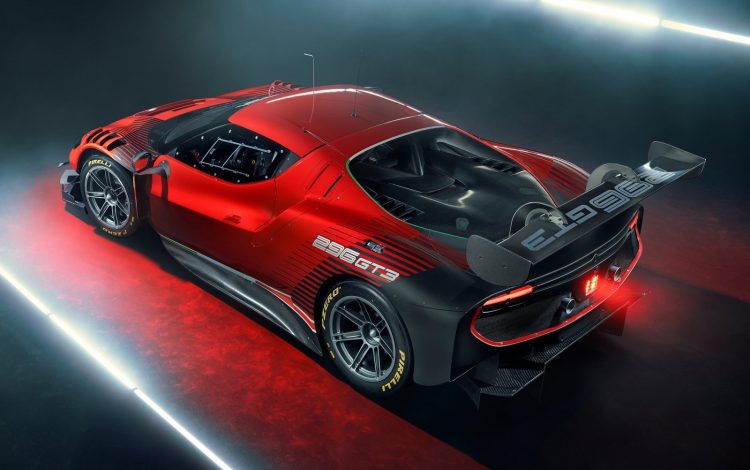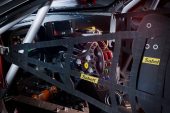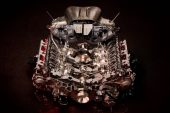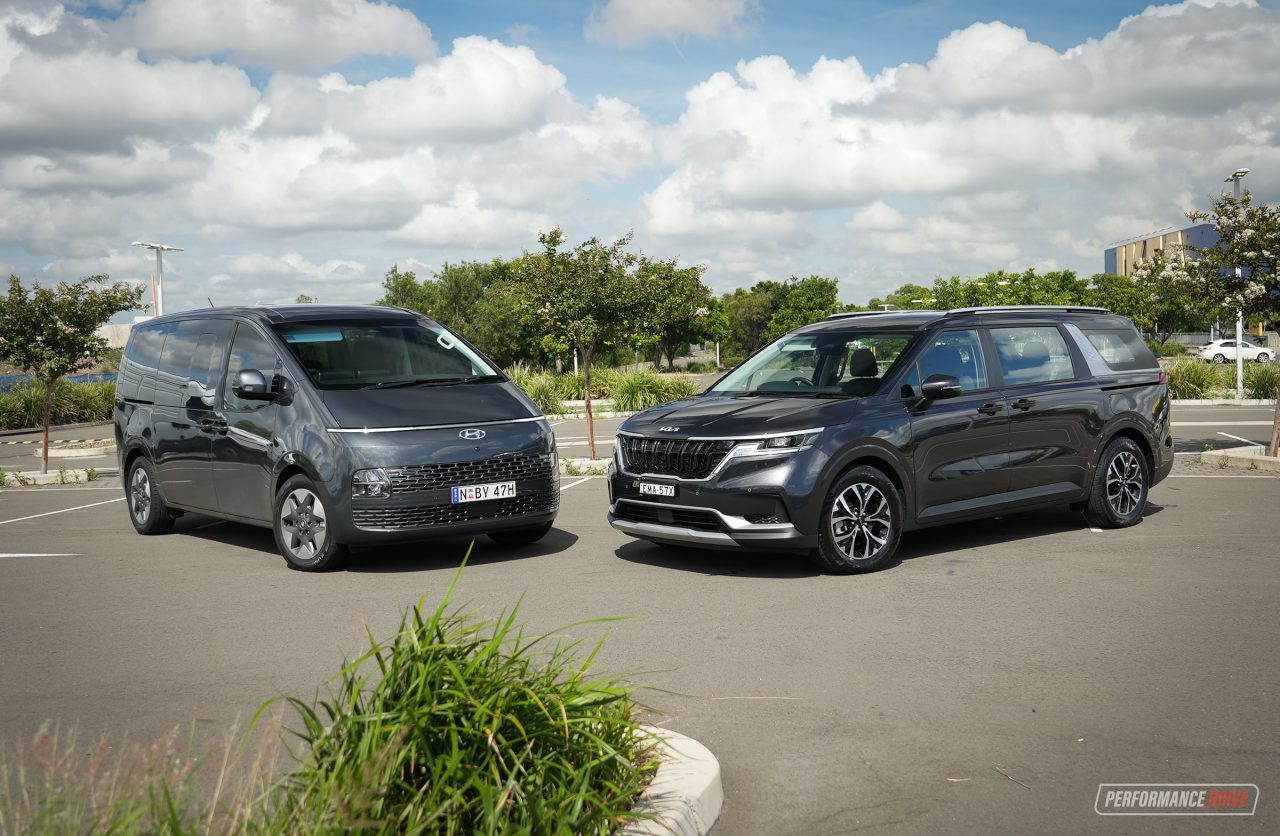Ferrari has taken the wraps off its latest GT3 creation, the 296 GT3. It replaces the 488 GT3, and comes in as the first mid-mounted twin-turbo six-cylinder track weapon since the iconic Ferrari 246 SP.
The 296 GT3 comes powered by a 2.9-litre twin-turbo V6 powertrain kicking out 447kW of power and 712Nm of torque. That’s down from the standard 296 GTB that kicks out 610kW from its hybrid system.
Within the mid-mounted engine bay, the V6 now sits closer to the driver and lower down in the car, with the turbochargers sitting within the 120-degree V-shape atop the block in order to lower the centre of gravity.
It puts power to the ground via a six-speed sequential gearbox from Xtrac, with the complete package weighing just 1250kg thanks to the removal of the hybrid system, and thanks to a new aero package that adds 20 per cent more downforce over Ferrari’s outgoing GT3 car.
The 293 GT3 is also said to be 10 per cent stiffer than the outgoing 488 GT3 while offering a longer wheelbase measuring 2660mm.
Underneath, there’s set of double wishbone arms at the front and rear, with five levels of adjustment for the dampers, and stopping power provided by a set of 400mm discs with redesigned six-piston front and four-piston rear calipers for the 18-inch wheels.
The Ferrari 293 GT3 is built to order for racing teams competing in the GT3 series. It will go up against the likes of the Porsche 911 GT3, Nissan GT-R, Audi R8, Lamborghini Huracan, AMG GT, Aston Martin Vantage and the BMW M4.
It is set for its official racing debut on the 61st Daytona 24 Hour event in January, 2023. See below for the specs:
TECHNICAL SPECIFICATIONS
ENGINE
Type F163CE, 6-cylinder, V 120°, 4 valves per cylinder, 2992 cm3, GDI Turbo
Bore/Stroke: 88 x 82 mm
Max power: Around 600Hp* at 7250rpm
Max torque: Around 710Nm* at 5500rpm
GEARBOX
Transversal sequential gearbox, 6 speed
Rotary e-shift actuator gearshift with paddles on the steering wheel
E-clutch actuator with paddle on the steering wheel
Magnesium gearbox case with integrated oil catch tank
Pneumatic pre-load adjustable differential
CHASSIS
Tracks: 1726mm front / 1710mm rear
Width: 2050mm max (without mirrors)
Wheelbase: 2660mm
Weight (no fuel, no driver): 1250kg
Front and rear suspension: double wishbone, tubular steel suspension arms, aluminium uprights, 5-way adjustable dampers
Rims: Front 12.5 inch x 18 inch, Rear 13 inch x 18 inch
Tyres: Front 30/68/18, Rear 31/71/18
Brake discs: Front 400×36, Rear 332×32
Brake calipers: Front 6 pistons, Rear 4 pistons
Brake pads: Front 30 mm, Rear 26.5 mm
* Subject to BoP.
